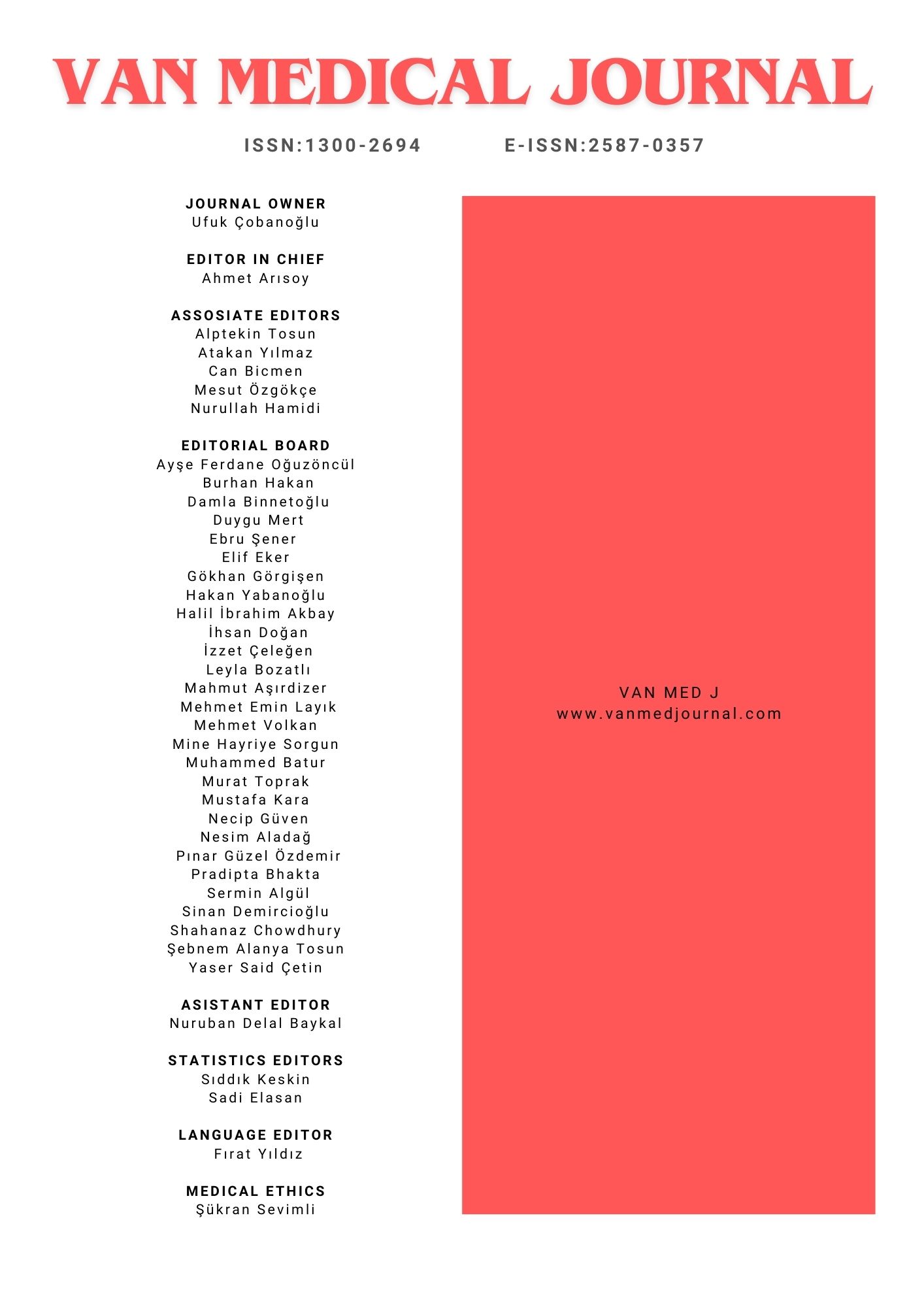Neutrophil Lymphocyte Ratio in Multiple Sclerosis Disease Actıvıty
NURAY BİLGE1, Fatma Şimşek1, Yıldız Dağcı21Department of Neurology, Atatürk University, Faculty of Medicine, Erzurum, Turkey2Department of Neurology, University of Health Sciences, Erzurum Education and Research Hospital, Erzurum, Turkey
INTRODUCTION: Multiple sclerosis (MS) is an autoimmune, chronic, inflammatory disease of the central nervous system. Neutrophil-lymphocyte ratio (NLR) is defined as a marker of disease activity in various diseases. In this study, it was investigated whether NLR would be an indicator of MS disease activity in MS patients using immunomodulatory therapy.
METHODS: The study included 49 MS patients and 30 age-matched and gender-matched healthy controls. C-reactive protein (CRP), erythrocyte sedimentation rate (ESR), neutrophil and lymphocyte count, NLR of MS patients in the periods of attack and remission, and those of healthy controls were compared retrospectively. SPSS 22 program was used for data evaluation.
RESULTS: There was no significant difference in age and gender between MS patients and the control group. The number of lymphocytes was lower in MS patients compared to the control group (p <0.05). NLR was significantly higher in patients with MS than healthy controls (p <0.001). Sedimentation rate was higher in MS patients than the control group (p <0.05). There was no statistically significant difference between NLR levels of MS patients during attack and remission periods. Sedimentation rate was higher in the MS attack period than in the remission period (p <0.05).
DISCUSSION AND CONCLUSION: This in study, it was concluded that NLR was not a marker for disease activity in MS patients receiving immunomodulatory therapy. In addition, in our study, it was thought that the increase in NLR in MS patients compared to healthy controls was related to the decrease in lymphocyte counts.
Multipl Skleroz Hastalık Aktivitesinde Nötrofil-Lenfosit Oranı
NURAY BİLGE1, Fatma Şimşek1, Yıldız Dağcı21Atatürk Üni̇versi̇tesi̇ Tıp Fakültesi Nöroloji Anabilim Dalı, Erzurum2Erzurum Bölge Eğitim ve Araştırma Hastanesi, Nöroloji Kliniği, Erzurum
GİRİŞ ve AMAÇ: Multipl skleroz (MS) santral sinir sisteminin otoimmün, kronik inflamatuar bir hastalığıdır. Nötrofil-lenfosit oranı (NLO), çeşitli kronik inflamatuar hastalıklarda hastalık aktivite markeri olarak tanımlanmıştır. Bu çalışmada immünomodülatör tedavi kullanan MS hastalarında NLO'nun MS hastalık aktivitesi belirteci olup olmayacağı araştırıldı.
YÖNTEM ve GEREÇLER: 49 MS hastası ile yaş ve cinsiyet eşleştirilmiş 30 sağlıklı birey çalışmaya alındı. MS hastalarınının atak ve remisyon dönemi ile sağlıklı bireylerin c-reaktif protein (CRP), eritrosit sedimentasyon hızı (ESH), nötrofil ve lenfosit sayıları ve NLO düzeyleri retrospektif olarak karşılaştırıldı.Verilerin değerlendirilmesi SPSS 22 programı ile yapıldı.
BULGULAR: MS hastalarında kontrol grubuna göre lenfosit sayısı daha düşüktü (p<0,05), nötrofil sayıları arasında istatistiksel olarak anlamlı fark yoktu. MS hastalarında sağlıklı kontrollere kıyasla NLO (p <0.001) ve sedimentasyon değeri (p<0,05) daha yüksekti. MS hastalarında atak ile remisyon dönemi NLO düzeyleri arasında istatistiksel olarak anlamlı fark yoktu. MS atak döneminde, remisyon dönemine göre sedimentasyon hızı daha yüksekti (p<0,05).
TARTIŞMA ve SONUÇ: Bu çalışmada NLO değerinin immünomodulatör tedavi kullanan MS hastalarında hastalık aktivitesi için bir belirteç olmadığı sonucuna varıldı. Ayrıca MS hastalarında kontrol grubuna göre NLO değerindeki artışın lenfosit sayısındaki düşmeye bağlı olduğu düşünüldü.
Corresponding Author: NURAY BİLGE, Türkiye
Manuscript Language: Turkish

